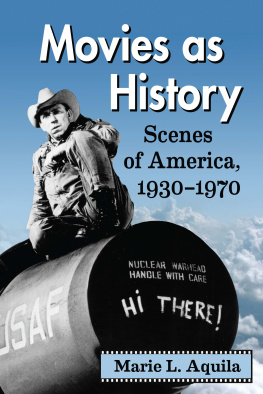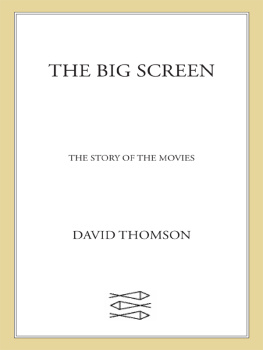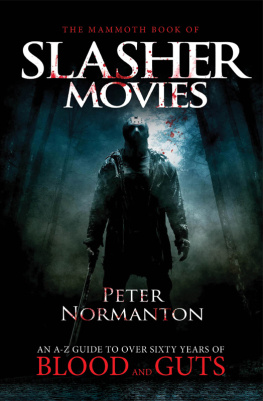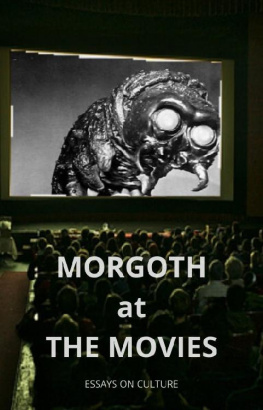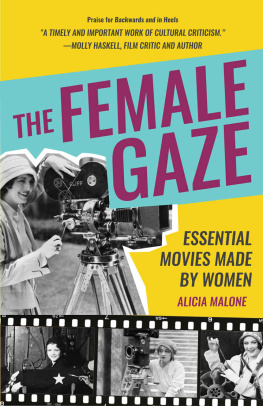
Movies as History
Scenes of America, 19301970
MARIE L. AQUILA

McFarland & Company, Inc., Publishers
Jefferson, North Carolina
LIBRARY OF CONGRESS CATALOGUING DATA ARE AVAILABLE
BRITISH LIBRARY CATALOGUING DATA ARE AVAILABLE
e-ISBN: 978-1-4766-1465-6
2014 Marie L. Aquila. All rights reserved
No part of this book may be reproduced or transmitted in any form or by any means, electronic or mechanical, including photocopying or recording, or by any information storage and retrieval system, without permission in writing from the publisher.
On the front cover: Slim Pickens as Maj. T.J. King Kong in Dr. Strangelove or: How I Learned to Stop Worrying and Love the Bomb, 1964 (Columbia Pictures/Photofest)
McFarland & Company, Inc., Publishers
Box 611, Jefferson, North Carolina 28640
www.mcfarlandpub.com
For Dick
Preface: Movies as Primary Sources
Movies as History: Scenes of America, 19301970 illustrates how popular movies can enhance the study of the history of the 20th century. Educational research demonstrates that different types of materials can appeal to different learning styles and that primary sources broaden and illuminate our understanding of events. Movies were a dominant form of popular entertainment throughout the last century, and they contain clues to an audiences thoughts and beliefs. Using popular movies as primary sources is an effective, winning strategy that can support the study of a particular historical event or issue. It can also help students become aware of the subtle messages to which they are exposed in all types of mass media.
Movies as History begins with a brief history of the moviemaking industry and a General Movie Analysis Guide designed to help students determine a movies main plot and any special themes, information, or cultural attitudes it presents. The topics covered are related to the Great Depression, the home fronts here and abroad during World War II, the early decades of the Cold War, and images of women in movies from the early 1930s to the late sixties. Each section begins with an overview of the history of the topic and references significant movies related to it. Representative movies are then analyzed in depth. Suggested Discussion Questions that place each movie in its historical context and reinforce the topic or other issues, including gender, race, or social concerns, follow the analyses.
This book focuses almost exclusively on movies made between 1930 and 1970 for a variety of reasons. The sheer volume of movies made in the 20th century, which number in the tens of thousands, made it necessary to limit the study to a manageable time period. There are many extraordinary movies made before the advent of the talkies, but encouraging student interest in old movies is one of the books aims, and silent movies would be a hard sell to todays young people. By the end of the tumultuous 1960s, on the other hand, the movie industry was changing quite rapidly. Movies became far more explicit after the Production Code, which circumscribed movie content, especially content that involved nudity, sex, profanity, race, or violence, was scrapped in 1968. The mature content of many historically significant movies made after 1970 makes those films more problematic for classroom use. In addition, many of the movies made before 1970 are now relatively unknown to contemporary audiences, including many teachers born after 1970. Some may even dismiss those films as simplistic and dated. Todays moviegoers, for example, would probably find the controversy over the use of damn in Gone With the Wind quaint at best, if not downright silly. Yet, movies produced before 1970 offer a treasure trove of historical information. They present remarkable opportunities to observe social behaviors, political attitudes, gender or racial issues, and reactions to historical events that were current when the movies were made.
An important goal of this book is to familiarize readers with some forgotten movie gems that can illustrate issues and topics as well as offer great entertainment. The representative movies may or may not be about a real character or event. Sergeant York is based on the early life and military career of Alvin York, a World War I Medal of Honor winner. York was a sincere conscientious objector, and he grappled with whether or not to register for the draft in 1917. But the movie was made in 1941 and celebrates Yorks heroism at a time when many Americans were reluctant to get involved in another conflict in Europe. The Suggested Discussion Questions focus on the movies portrayal of Yorks pacifism and combat experiences and how they may have reflected or influenced the debate in 1941 about what role America should play in Europes new war. Lady for a Day, on the other hand, is fictional, but it addresses real issues regarding the relationship between Americas rich and poor in 1933, at the start of President Franklin D. Roosevelts New Deal. The Suggested Discussion Questions explore the costs and benefits of aiding the poor at a time when government programs were helping millions of desperate, out of work Americans.
Other books advocate using movies as teaching tools, but many are aimed at more sophisticated classroom use than those offered in this volume. Books that are aimed at secondary teachersincluding The History Teachers MovieGuide by Richard Di Giacomo and Jerry Di Giacomo, and Teaching History with Film by Alan S. Marcus, et al.offer helpful guidelines about how to use movies as classroom tools. But much of their focus is on historical movies that portray an event rather than on movies as primary sources from the times in which they were produced.
Movies as History emphasizes when the movie was made and its connection to the times. It does not critique movies from an aesthetic perspective, nor does it emphasize directing or acting techniques or focus on specific directors, actors, or actressesexcept in a few instances. Although some of the movies discussed have won or received nominations for Academy Awards, artistic quality is not the books primary concern. Its main purpose is to demonstrate how popular movies can be used as primary sources and to guide middle and secondary school teachers in the use of movies for classroom discussion. All of the movies analyzed in this volume are readily available on DVD or other formats. (See the Appendix for information on copyright guidelines and fair use.)
The idea for this book grew out of my own teaching experiences and my love of old movies. I would often see something in a movie that directly reflected historical events or attitudes from the period when the movie was made. For example, Americans deep fears about the possibility of Communist subversion during the Cold War frame the 1956 science-fiction classic, Invasion of the Body Snatchers. World War II was an all-consuming international experience, and the section on the war covers life on the home front in America and also includes movies from France, Italy, England, and Japan. Understanding how people from other countries viewed an event of such magnitude can help students recognize and evaluate differing international views about contemporary issues.
I could never have completed this book without the support of colleagues, friends, and family. When I was young, my aunt, Claudia Kobilsek, made sure I never missed a movie musical, new or reissue, or an important Disney event. Ken Stuart, a truly gifted teacher at the Indiana Academy for Science, Mathematics, and Humanities, set a high standard for teaching excellence and innovation. For more than 40 years, good friends and fellow teachers Ken and Trudy Feltges have shared their love of teaching and movies. My daughter, Valerie, son, Stephen, and his wife, Meredith, were willing to try an endless list of old movies, and their inspired suggestions introduced me to some great new titles. My husband, Dick, established the model and cheerfully encouraged and celebrated this ever-expanding project. He alerted me to movies that might work and endured some real lemons as I searched for more.
Next page
